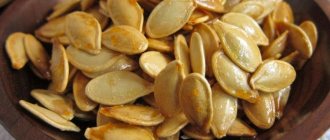Synthetic hypoglycemic oral antidiabetic agents are medications whose main function is to normalize blood glucose levels and alleviate the condition of patients with diabetes.
They achieve this in two ways: either they promote increased production of insulin by the pancreas, or they increase the sensitivity of tissues to this hormone. In addition, with such a diagnosis, additional medications are often prescribed to reduce the symptoms and consequences of the disease (to normalize blood pressure and weight, cleanse blood vessels, etc.).
Which tablets the attending physician prescribes depends on two factors: the type of diabetes and its clinical picture.
Diabetes mellitus type 1
The peculiarity of type 1 diabetes is that the pancreas does not produce insulin at all, a hormone that naturally transports glucose from the blood to the tissues. Therefore, the main goal of its treatment is to supply the body with this important substance. This is successfully achieved through insulin therapy, when the patient injects himself with certain dosages of insulin several times during the day.
Sugar-lowering tablets are not prescribed, since this function is performed by insulin injections. If they are combined with each other, the risk of hypoglycemia increases. However, those suffering from type 1 diabetes still have to take certain medications.
Metformin
Antihyperglycemic tablet medicine of the biguanide class. It has been successfully used for the treatment of type 2 diabetes for many years. Reduces blood sugar levels by blocking gluconeogenesis (glucose production) in the liver. At the same time, it has a positive effect on obesity, reducing appetite and normalizing metabolism. Recently, the medical community has proposed using it in the treatment of insulin-dependent forms of the disease.
Metformin
In January 2021, the results of a retrospective study conducted in Turkey were published. It tested the effectiveness of Metformin in combination with insulin injections for type 1 diabetes. 26 women and 32 men took part in the experiment. They were divided into 2 groups. One of them was treated for a year only with insulin, the second was injected and given the test drug. What results were obtained with combined treatment:
- more pronounced decrease in blood sugar;
- improvement of metabolism;
- reducing insulin dosage;
- getting rid of excess weight
- pressure stabilization.
Among the negative aspects, a side effect was noted - indigestion. But no other complications or abnormalities (lactic acidosis, hypoglycemic attacks, vitamin deficiency) were recorded. As a result, it was concluded that Metformin is effective for the treatment of type 1 diabetes. However, its advisability is still debated in medical circles, so not every doctor prescribes this drug to their patients along with insulin.
The remaining drugs prescribed for type 1 diabetes mellitus belong to the group of auxiliary drugs. Their task is to improve the patient’s condition by eliminating the accompanying symptom complex and the consequences of this disease. This includes drugs that improve pancreatic function, stabilize blood pressure, control weight and strengthen blood vessels. They will be described in more detail below.
Top 5 diabetes pills
Let us remind you once again that only a doctor can choose the right drug to lower blood sugar levels. Often a combination of several drugs or even parallel insulin injections may be needed. Self-medication for diabetes is unacceptable, because only an experienced endocrinologist, having studied the results of your tests, can prescribe a certain drug and then adjust its dosage. Without the participation of a doctor, such treatment can cause serious complications, including hypoglycemia and coma. We have compiled a list of the most effective and commonly prescribed diabetes pills.
Diabetes mellitus type 2
The peculiarity of type 2 diabetes is that the pancreas still produces insulin (unlike type 1 diabetes). But it is either not enough to transport glucose from the blood into cells, or the tissues are not sensitive to this hormone and refuse to respond to it. The result is that the concentration of sugar in the blood increases. Due to this course of the disease, patients do not need insulin and are not prescribed insulin injections.
Therefore, the basis of therapy for them is hypoglycemic agents. Let's look at medications that have proven to be some of the most effective.
Sulfonylurea derivatives
They have an effect on pancreatic β-cells, increasing the secretion of insulin so that it is enough to utilize glucose from the bloodstream. In addition to their hypoglycemic effect, these tablets improve kidney function and prevent the risk of cardiovascular diseases.
First generation drugs are prescribed in large dosages. The duration of action is short. These include Chlorpropamide, Carbutamide and Tolbutamide (Butamide) tablets. Recently, they are rarely used, as they are being replaced by new and more effective drugs.
Drugs II, new generation are prescribed in minimal dosages. The duration of action is quite long (up to 24 hours). Side effects are observed less frequently than with the use of first generation sulfonylurea tablets. Their list:
- active ingredient Glibenclamidum, used in the production of the drug Maninil;
- Gliquidone, the basis of the drug Glurenorm;
- Gliclazide, the same active ingredient is the basis of Diabeton and Glidiab;
- Glimepiride, Amaryl;
- Glipizide.
Sulfonylurea tablets can be taken shortly before or during meals, according to the instructions for the medications and the recommendations of the doctor. In this case, it is imperative to take into account the list of contraindications for them and the undesirable consequences that may arise due to too long use or incorrectly selected dosage.
2nd generation sulfonylureas
Possible side effects:
- allergy to sulfonylurea;
- photodermatosis;
- hypoglycemic syndrome;
- hyponatremia;
- leukopenia;
- failure of the liver;
- increased sensitivity to alcoholic beverages;
- nausea, metallic taste on the tongue, discomfort in the gastrointestinal tract, intestinal disorders, problems with stool;
- weight gain.
The dosage is prescribed by the doctor taking into account the patient’s age, his well-being, blood counts and concomitant diseases.
Meglitinides/glinides
Tablets of this group are similar in their therapeutic effect to sulfonylurea drugs, as they have a stimulating effect on the pancreas and increase insulin production. Excellent for reducing blood glucose levels after each meal. Often prescribed in combination with Metformin. Their fundamental difference from the first group of drugs is that they do not penetrate β-cells and do not violate their integrity.
The drugs are based on two active ingredients.
Repaglinide is found in the following medications:
- NovoNorm;
- Insvada;
- Prandin;
- GlucoNorm;
- Surepost;
- Diaglinid;
- Repodiab;
- Aglinox.
Nateglinidum is the basis of the drug of the same name and Starlix. According to studies, Repaglinide is more effective than Nateglinide.
Glinide preparations
Advantages of meglitinides: quick effect (normalization of sugar within 10 minutes), restoration of phase I insulin production, stabilization of its concentration in the body between meals. Cons: low glucose-lowering effect, weight gain, long-term use leads to a decrease in the effectiveness of the tablets, a large number of negative consequences.
Among the side effects:
- hypoglycemia;
- sinusitis, rhinitis;
- nausea, stool disorders, vomiting;
- arthralgia, back pain;
- headache;
- paresthesia;
- ischemia, angina pectoris.
Tablets of this group are not prescribed in parallel with sulfonylureas, since they have the same therapeutic effect. Meglitinides are contraindicated during pregnancy, lactation and any liver disease.
Biguanides
Quite popular medications for the treatment of type 2 diabetes. Their task is to block gluconeogenesis in the liver and improve the absorption of sugar by tissues. In addition, biguanides reduce the absorption of fat and glucose from the gastrointestinal tract and prevent the development of various complications, especially those related to the cardiovascular system. Many tablets in this group reduce appetite, activate lipolysis, and stop lipogenesis, so they are often used for weight loss in diabetes. Duration of action - up to 16 hours.
Biguanides are derivatives of guanidine and are divided into 2 groups.
Dimethylbiguanides:
- Glucophage;
- Siofor;
- Metformin;
- Gliformin;
- Diaformin.
Butyl biguanides:
- Adebit;
- Silubin;
- Buforminum.
Biguanide drugs for the treatment of type 2 diabetes
Possible side effects:
- lactic acidosis;
- lethargy, drowsiness, loss of strength;
- dyspnea;
- nausea, vomiting, stool disorders, bloating, discomfort in the stomach;
- muscle spasms and pain;
- decrease in body temperature and pressure;
- bradyarrhythmia.
Most often, tablets of this group are prescribed for type 2 diabetes mellitus and excess body weight. The risk of obesity in this disease is quite high, so it is recommended to drink biguanides to reduce weight and sugar. Metformin is considered the most popular and effective drug. However, please note that it has many contraindications, including childhood, kidney and liver pathologies, pregnancy and lactation. Patients who have been prescribed these medications should also know that they are not compatible with alcohol.
Thiazolidinediones
In terms of their therapeutic effect, they are most similar to biguanides. Compared to them, these are new drugs that still have a more powerful effect. But at the same time, they are more expensive, and the undesirable consequences after them appear more clearly and more often. These tablets stimulate β-cells to produce more insulin and increase tissue sensitivity to it. This group includes:
- Pioglitazone. This active ingredient is the basis of tablets Pyoglar, Pigeon, Piozer, Amalvia, Actos.
- Rosiglitazone. It is the basis of the drug Avandia, Rosidia, Avendon, Avandamet, Roglit.
Thiazolidinedione drugs
Contraindications include heart and liver failure, pregnancy, lactation, ketoacidosis, and childhood.
Gliptins
These are new generation tablets. They promote increased production of pancreatic insulin, without having a negative effect on it. Protect β-cells from damage. After them, side effects are rarely observed, but in some cases patients complained of weight gain. However, the manufacturers claim that these are in no way related to each other. The biggest advantage of these medications is that they do not provoke the development of hypoglycemia.
The most effective gliptins:
- Active ingredient Sitagliptin: tablets Ptiaglin, Januvia, Siglita, Janumet.
- Vildagliptinum: drug Galvus/Galvus.
- Saxagliptinum: Onglyza and Kombiglyze Prolong tablets.
Gliptins, new generation tablets
Gliptins are available both in pure form and as combination drugs, which are combined with other antidiabetic components (for example, Metformin).
Contraindications include childhood, pregnancy, lactation, all types of failure (liver, kidney, heart), type 1 diabetes.
α-glucosidase inhibitors
New generation antidiabetic drugs. They stop the synthesis of an enzyme whose purpose is to break down complex carbohydrates. This leads to the fact that the absorption of polysaccharides slows down and sugar remains within normal limits. Their undeniable advantages are that they are completely safe for health and do not entail any side effects. Prevent the development of hyper- and hypoglycemia.
This group includes:
- Active ingredient: Voglibose: contained in the drug Voxid.
- Miglitol: found in Diastabol.
- Acarbosum: represented by the most popular and effective tablets in this group - Glucobay.
Tablets from this group are also good because they can be combined with other drugs against diabetes. Contraindications include any gastrointestinal diseases, childhood, hernias, pregnancy, lactation.
This is interesting. Some plants have a similar therapeutic effect on diabetes: Maitake mushroom and Tribulus creeping.
Na-glucose cotransporter (SGLT-2) inhibitors
These are the latest generation antidiabetic drugs. On the one hand, they effectively lower blood sugar. On the other hand, not everyone likes the mechanism of their action, since these are diuretic tablets, and quite powerful ones at that. As soon as the concentration of glucose becomes dangerous, inhibitors force the kidneys to excrete it in the urine, and this level drops. However, when taking the medicine, frequent urination and a constant urge to go to the toilet are observed. This often leads to dehydration and low blood pressure.
Na–glucose cotransporter inhibitors
Inhibitors of the Na-glucose cotransporter include:
- The active substance Dapagliflozinum is the drugs Forxiga and Xigduo XR.
- Canagliflozin (Canagliflozinum) - Invokana and Vokanamet.
- Empagliflozin (Empagliflozinum) - Jardiance.
When using these pills, the risk of ketoacidosis increases, and such cases have already been recorded. Therefore, doctors insist on additional research on SGLT-2 and warn about their careful use for the treatment of diabetes.
Preparations with chromium
Chromium (Cr) optimizes blood glucose levels, avoids insulin dependence and controls appetite (eliminates cravings for sweets) and leads to weight loss. Therefore, for type 2 diabetes mellitus and obesity, tablets with this microelement are often prescribed:
- Chromium picolinate (Chromium (III) picolinate);
- Century 2000;
- Stay Healthy;
- Vitrum Performance;
- brewer's yeast in capsules, enriched with chromium, carotene, thiamine, zinc;
- Chromium Picolinate Plus.
Preparations with chromium
Preparations with chromium can also be prescribed for the treatment of other forms of diabetes - this issue is discussed with the doctor on an individual basis.
NovoNorm
This is a prescription drug for diabetes from the group of glinides, the main active ingredient of which is repaglinide. Effectively reduces blood sugar against the background of metabolic disorders in people with diabetes. NovoNorm is prescribed for type 2 diabetes, when diet and exercise are ineffective. Also, taking these tablets is indicated when treatment with metformin is low (in this case, combination treatment is indicated).
Contraindications:
type 1 diabetes, ketoacidosis, surgical interventions, conditions requiring insulin, pregnancy and breastfeeding, intolerance to drug components, age under 18 years. Diabetes tablets should be used with caution in those who have liver and kidney diseases, and also have an unhealthy diet.
New norm
Novo Nordisk (Novo Nordisk), Denmark
NovoNorm is a short-acting oral hypoglycemic drug. Rapidly reduces blood glucose levels, stimulating the release of insulin by the pancreas. Binds on the β-cell membrane to a receptor protein specific for this drug. This leads to blocking of ATP-dependent potassium channels and depolarization of the cell membrane, which in turn promotes the opening of calcium channels. The entry of calcium into the β-cell stimulates the secretion of insulin.
from 139
911
- Like
- Write a review
Other types of diabetes
Gestational
One of the most dangerous species. Diagnosed in pregnant women. Since all hypoglycemic drugs are contraindicated when carrying a child, the main directions of treatment are exercise therapy and diet therapy. If they do not produce results, insulin injections are prescribed with caution.
As for tablets, in the USA, some doctors, at their own risk, prescribe drugs such as Metformin, Glucophage and Siofor for gestational diabetes mellitus. However, neither in Russia nor in Western European countries such dangerous prescriptions are welcomed or recommended, since these medications can cause pregnancy complications, ranging from miscarriage to intrauterine pathologies of the fetus.
Hidden
A latent form of the disease, which in 50% of cases develops into type 2 diabetes mellitus. However, if it is detected in a timely manner and all medical recommendations are followed accurately, this can be avoided. Like gestational diabetes, latent diabetes is treated mainly with moderate physical activity and diet therapy. Vitamins and medications containing potassium are often prescribed:
- Panangin;
- Asparkam;
- Potassium + Magnesium Forte from Evalar;
- Potassium iodide;
- Potassium Orotate;
- Kudesan;
- Magnesium + Potassium from Doppelherz.
Vitamins and preparations containing potassium
These tablets can also be prescribed for any form of the disease to reduce the risk of cardiovascular pathologies. During the latent stage, endocrinologists often prescribe Metformin or Acarbose to prevent type 2 diabetes. They are taken for several years until complete recovery.
MODY-diabetes
A rare form of adult-onset diabetes mellitus diagnosed at a young age. Its symptom complex is reminiscent of type 2 diabetes, but the clinical picture is smoother: there are no attacks, spikes in sugar and insulin, coma, and the risks of various complications are reduced. There is no decrease in cell sensitivity to insulin. Tablets for the treatment of MODY diabetes are prescribed depending on its modification:
- Mody-1 - sulfonylurea drugs: Glipizide, Glimepiride, Glyburide.
- Mody-2 - does not require drug treatment.
- Mody-3 and -4 are a limited range of sulfonylurea drugs: only Gliclazide and Glimepiride.
- Mody-5 and 6 - insulin injections, tablets are not prescribed.
MODY diabetes occurs with complications due to excess weight, which blocks many methods of treating the disease. In this regard, doctors recommend that parents whose children have been diagnosed with this disease should first engage in diet therapy and weight loss.
Auxiliary tablets
Diabetes mellitus of any type is characterized not only by a pathological increase in blood glucose. The disease is accompanied by a number of symptoms that worsen the patient's quality of life. In addition, over time, improper functioning of the pancreas and high sugar levels affect the functioning of many internal organs and provoke the development of complications.
Therefore, the goal of therapy is not only to normalize blood counts, but also to improve well-being and minimize undesirable consequences. In this regard, depending on the patient’s health condition, the doctor additionally prescribes tablets of various pharmacological effects.
Enzyme preparations
For diabetes of various types, take pills for the pancreas, the functioning of which is impaired. They improve its enzymatic function, replenish the deficiency of amylase (for the breakdown of carbohydrates), protease (proteins) and lipase (fats). Here is a list of enzyme preparations that a doctor can prescribe for diabetics in this group:
- Abomin;
- Actovegin;
- Betaine;
- Wobenzym;
- Digestal;
- Creon;
- Mezim;
- Pangrol;
- Panzinorm;
- Pancreatin;
- Pezital;
- Festal;
- Phlogenzyme;
- Enzistal;
- herbal enzyme tablets: Solizim, Somilase, Unienzyme.
Tablets for the pancreas
As a result of correct and regular use of enzyme preparations, not only the functioning of the pancreas improves, but also digestion and metabolism.
Tablets to lower blood sugar levels.
September 28, 2021
8633
4.6
5
Content
- Types of diabetes
- Causes of type 2 diabetes mellitus
- How to choose diabetes pills
- Top 5 diabetes pills
- Diabetes
- Siofor
- Januvia
- NovoNorm
- Glucobay
To treat diabetes, it is not necessary to regularly inject insulin. In many cases, it is enough to simply lead a healthy lifestyle and take special medications. Let's figure out what types of diabetes there are and what pills doctors prescribe.
Diabetes mellitus is not one specific disease, but a group of diseases in which the metabolism in the body is disrupted (in particular, carbohydrate metabolism suffers).









